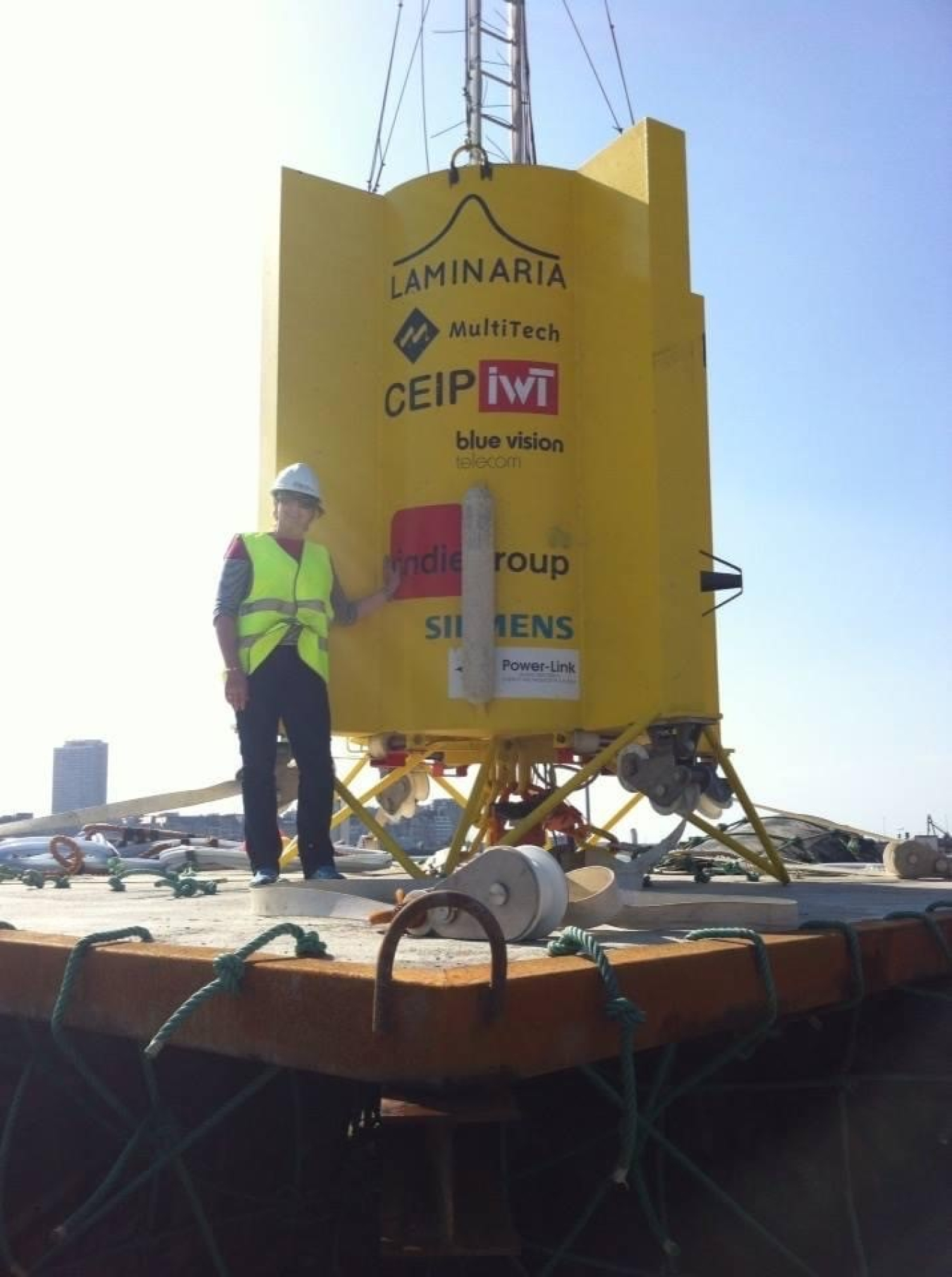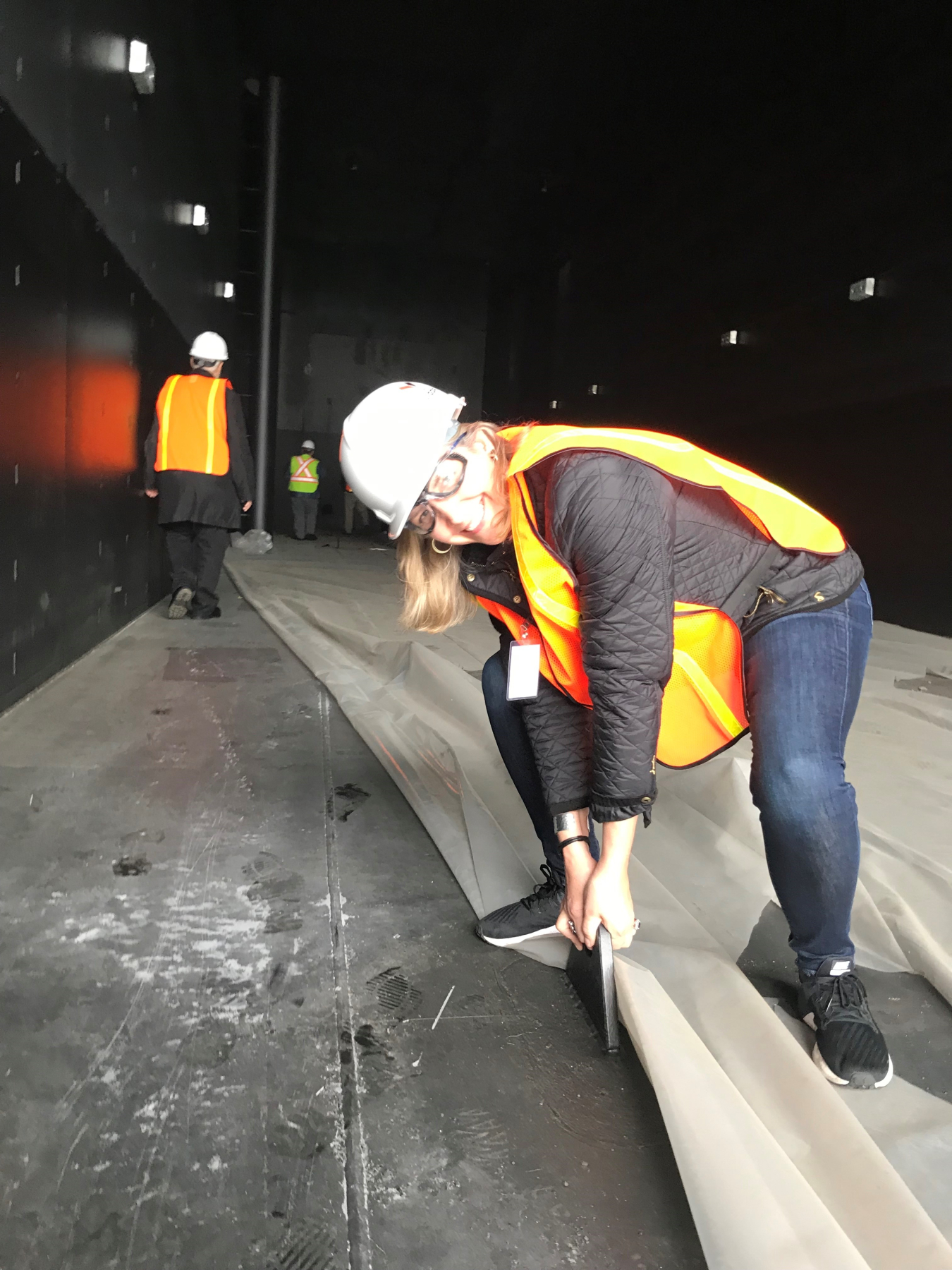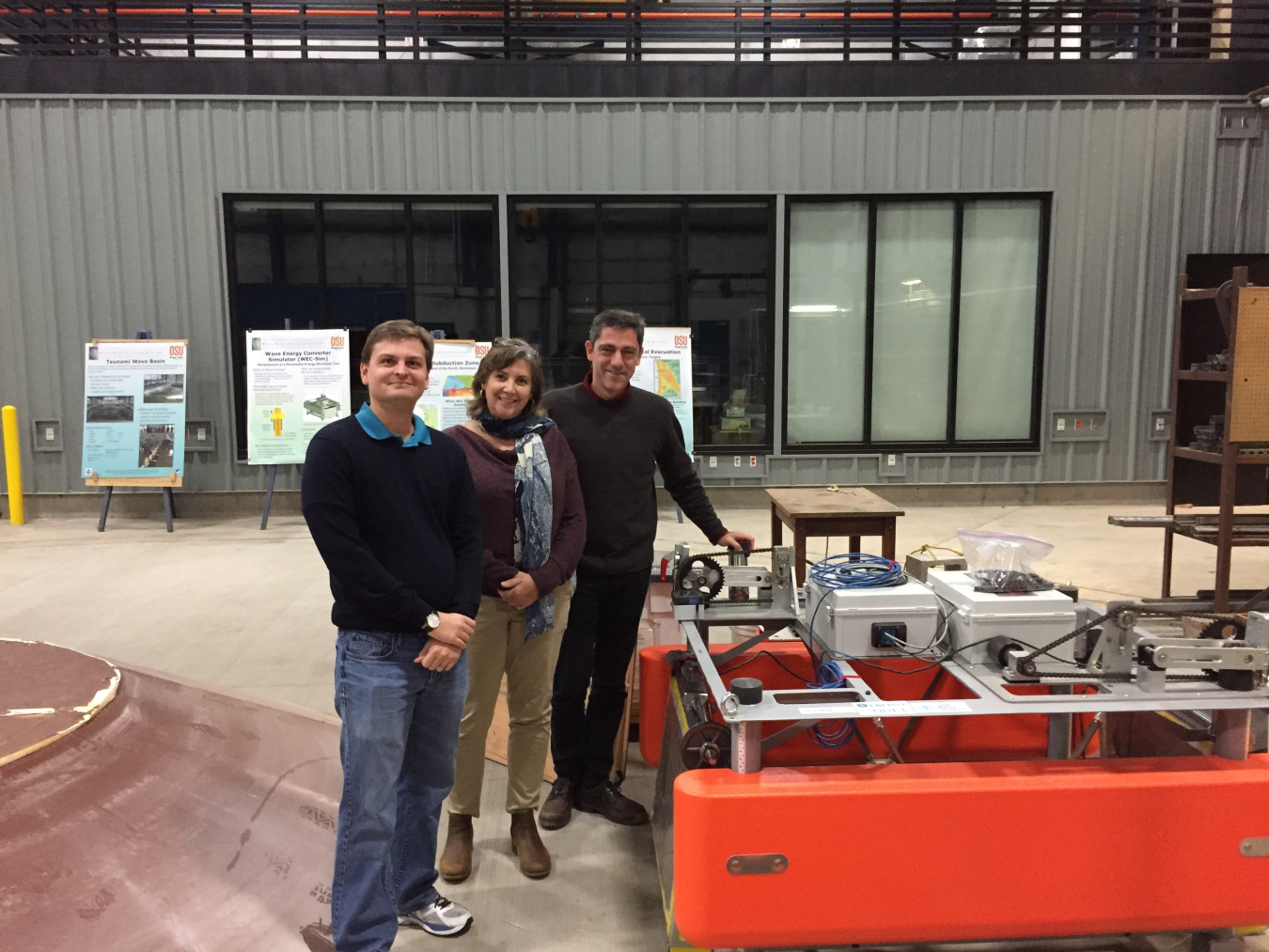DOE's Water Power Technologies Office is excited to announce the latest addition to our growing team of water power experts, Elaine Buck. Read up on the unique experience that Elaine brings to the team.
Water Power Technologies Office
October 26, 2021
Elaine visiting the Laminaria wave energy converter in Belgium. Image: Elaine Buck
The Department of Energy’s (DOE) Water Power Technologies Office (WPTO) is excited to announce the latest addition to our growing team of water power experts, Elaine Buck. A marine energy maven, Elaine brings years of relevant experience sure to make an immediate impact on WPTO’s marine energy efforts.
In her past life, she worked in the oil and gas industry for Schlumberger, collecting, processing, selling, and marketing geophysical data, where she advanced into operations management, working and living all over the world. In 2006, Elaine became interested in renewables and started her master’s program in Renewable Energy Development at Heriot-Watt University in 2011. From there, she worked for Aquatera, an environmental and renewable energy consulting company, focusing her efforts on marine energy research and development.
More recently, Elaine spent the last 10 years living in Scotland, where she played an integral role at the European Marine Energy Centre (EMEC). As a technical manager, Elaine helped develop standardized processes within EMEC’s project management system, before focusing her expertise on wave and tidal testing methodologies. Learn more about Elaine’s expertise and the unique insights she brings to WPTO in the interview summary below.
Why are you excited to join the marine energy team? Why is now the perfect time for you to come on board?
Now is the perfect time to join WPTO because of the increased focus and funding for marine energy in the U.S. I just knew that once more federal funding was put behind the program, marine energy would take off. And we’ve already seen examples of this in the last few years, as marine energy is seeing steady funding increases. I’m very lucky to have the opportunity to return to my home country at a time where marine energy efforts are expanding.
In regard to why I’m excited to join this team, I’ve been extremely impressed by the team Alejandro Moreno and Jennifer Garson have put together. I’ve been working with the WPTO team through other projects since 2014. I started regularly joining conferences, which led to my invitation to WPTO merit reviews, as well as the program peer reviews. In 2019, I served as the Marine Energy Program chair for WPTO’s Peer Review, so I have lots of familiarity with WPTO efforts.
In my time working with WPTO, I was blown away by the energy and intense productivity of the team. I quickly noticed that the drive and attitude at WPTO ran deeper than any individual, as the collective effort and collaboration throughout the team was astounding. The production level was so high, I was shocked when I learned it came from such a small team. During my transatlantic return to EMEC, I was so energized by the level of output and opportunities being provided here in the U.S.
You spent the last 5 years in Scotland working at the European Marine Energy Centre. What insights from your time overseas could benefit our efforts at WPTO?

Elaine jokingly surveying the mooring anchor points on the Ocean Energy device in Portland, Oregon. Image: Elaine Buck
I think the key here is my experience with several developers in the water at EMEC and in other marine energy projects internationally. It’s fantastic that we’re seeing an increasing number of devices coming to the U.S., and being able to share the experiences working with the developers will help us make more informed decisions about these technologies and how we can best support them through their development lifecycles.
Lastly, my work with international standards will also benefit the efforts at WPTO. I am working closely with the IEC System for Certification to Standards Relating to Equipment for Use in Renewable Energy Applications (IECRE) to organize a peer assessment process to assess test sites to obtain designation as a Renewable Energy Test Laboratory. I believe standards are vitally important as they provide international benchmarks within the industry. Standards can advance and de-risk marine energy technologies through certification, and ultimately, to commercialization. I also hope to act as a bridge between UK and European developers into the US market. There are tons of developers overseas who would be eager to break ground in U.S. projects, and my international network could be an asset when coordinating with them.
From an outside-coming-in perspective, what are some things you see WPTO doing well? Where are you excited to help WPTO grow?
Aside from the overall drive and energy within the team, I think the peer review process is a particularly bright spot of the program. Peer review is a great opportunity to not only demonstrate transparency of where federal dollars are spent, but also publicly promote the sector’s successes.
On the other hand, I think there is room for WPTO to capitalize further on the unique offerings of peer review. I think room for growth lies in inclusion of other agencies throughout the process, similar to how they are included in many of the program’s merit reviews of project proposals.
You’ve previously worked in other energy sources such as oil and gas. What drew you to working in renewables and specifically marine energy? What lessons from your time in oil and gas can be applied to marine energy?
That transition began with international climate change policy progression, particularly with signing of the Paris Climate Agreement. I vividly remember the Deepwater Horizon oil spill incident in the Gulf of Mexico. During that event I told myself, if I have the next 15-20 years in the energy sector, I need to move to renewables and help this industry support the global energy transition. I felt very passionately because the ocean has been a part of my background since university, where I spent much of my free time open-water swimming and diving.
As far as applying lessons learned from oil and gas to marine energy, marine energy data collection will be a key focus of mine. When I first came into geophysics, data management was vitally important. After a slow-down in exploration, we were left with a surplus of data with which we found creative ways to analyze and turn into innovative data products that were of high value to our oil and gas customers. I’m confident that once WPTO reaches a certain level of data maturity through open-source data analytics, we will be able to discover the true power achievable from ocean waves, tides, and current. I’m eager to apply my knowledge of data innovations to WPTO’s ongoing efforts. In addition, working and managing marine geophysical operations gave me great experience in marine installations and safety.

Elaine with fellow researchers at an Oregon State University test tank. Image: Elaine Buck
Thinking big picture, what is the next big step we need to take in the marine energy space? What current barriers do we need to overcome to take that step?
I’m very hesitant to answer this question because at this point, my technology-neutral position is not to point at one specific technology or idea and deem it “the next big thing.” I see so many exciting things coming out of WPTO-funded projects and the national labs, and there are so many impressive and innovative projects happening in the marine energy industry. Whether we’re maximizing testing infrastructure with TEAMER, building out the cable infrastructure at PacWave, or funding current in-water deployments with partners such as Oscilla, C-Power, and Calwave, these are wildly exciting times for marine energy in the U.S. I think the next steps are to instill opportunities for growth in the marine energy supply chain. Funding programs that integrate marine energy supply chain innovations will push marine energy into competitive commercialization.

